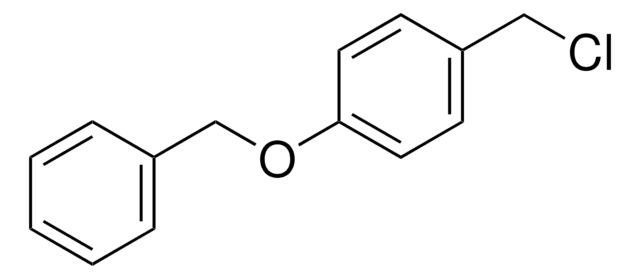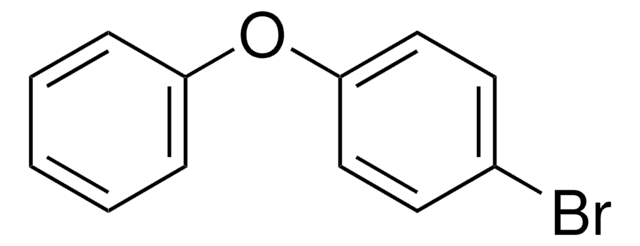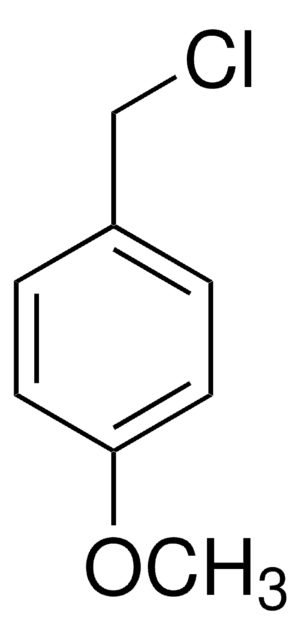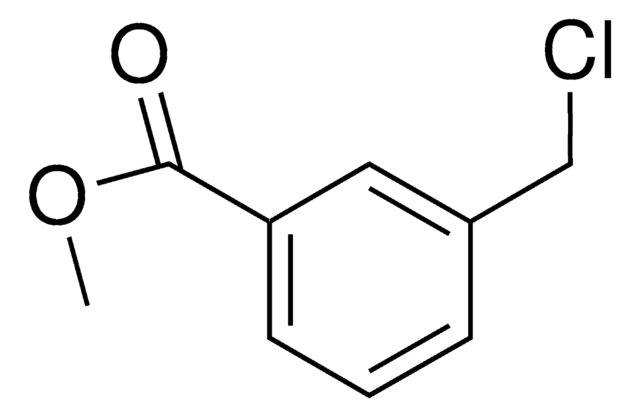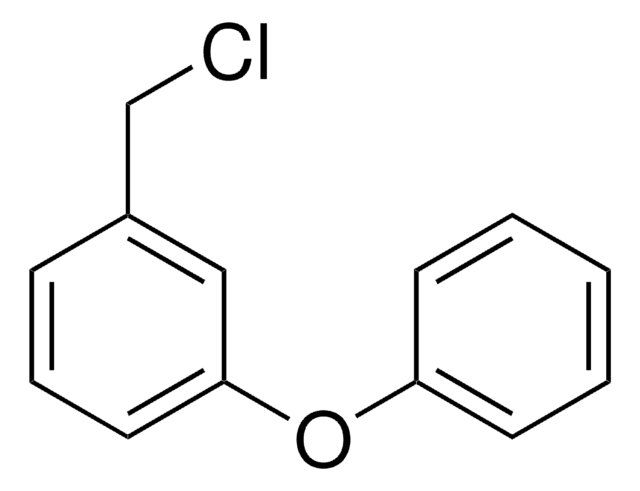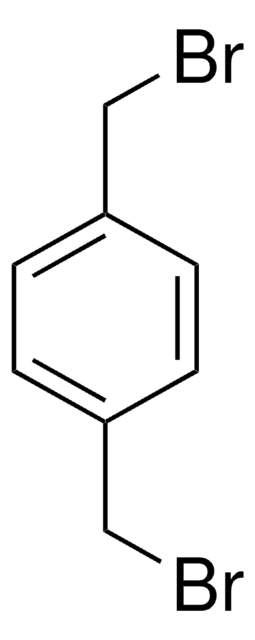432881
4-(Chloromethyl)phenyl acetate
98%
Sinónimos:
α-Chloro-p-cresol acetate, 4-Acetoxybenzyl chloride, p-(Chloromethyl)phenyl acetate, p-Acetoxybenzyl chloride
About This Item
Productos recomendados
Ensayo
98%
Formulario
liquid
índice de refracción
n20/D 1.53 (lit.)
bp
240 °C (lit.)
densidad
1.201 g/mL at 25 °C (lit.)
grupo funcional
chloro
ester
cadena SMILES
CC(=O)Oc1ccc(CCl)cc1
InChI
1S/C9H9ClO2/c1-7(11)12-9-4-2-8(6-10)3-5-9/h2-5H,6H2,1H3
Clave InChI
OKRCXSCDWKJWSW-UHFFFAOYSA-N
Aplicación
Palabra de señalización
Danger
Frases de peligro
Consejos de prudencia
Clasificaciones de peligro
Acute Tox. 4 Oral - Skin Corr. 1B - Skin Sens. 1
Código de clase de almacenamiento
8A - Combustible corrosive hazardous materials
Clase de riesgo para el agua (WGK)
WGK 3
Punto de inflamabilidad (°F)
235.4 °F - closed cup
Punto de inflamabilidad (°C)
113 °C - closed cup
Equipo de protección personal
Faceshields, Gloves, Goggles, type ABEK (EN14387) respirator filter
Elija entre una de las versiones más recientes:
¿Ya tiene este producto?
Encuentre la documentación para los productos que ha comprado recientemente en la Biblioteca de documentos.
Nuestro equipo de científicos tiene experiencia en todas las áreas de investigación: Ciencias de la vida, Ciencia de los materiales, Síntesis química, Cromatografía, Analítica y muchas otras.
Póngase en contacto con el Servicio técnico